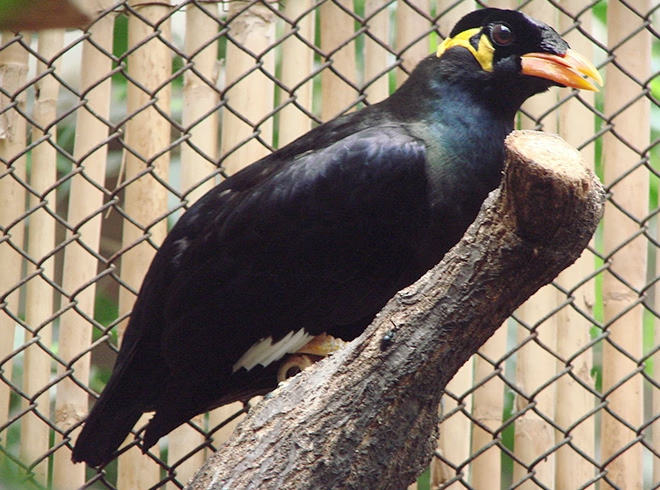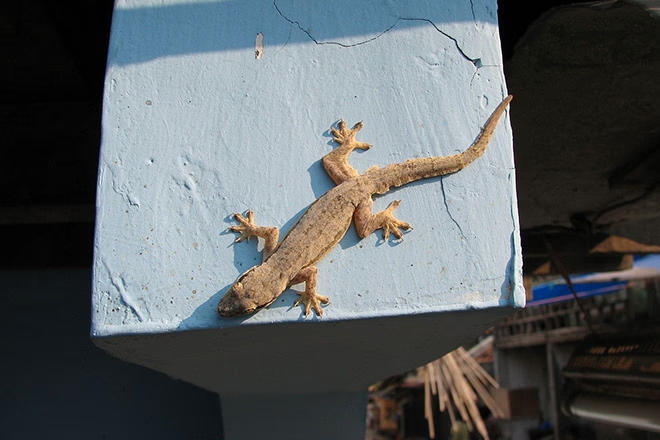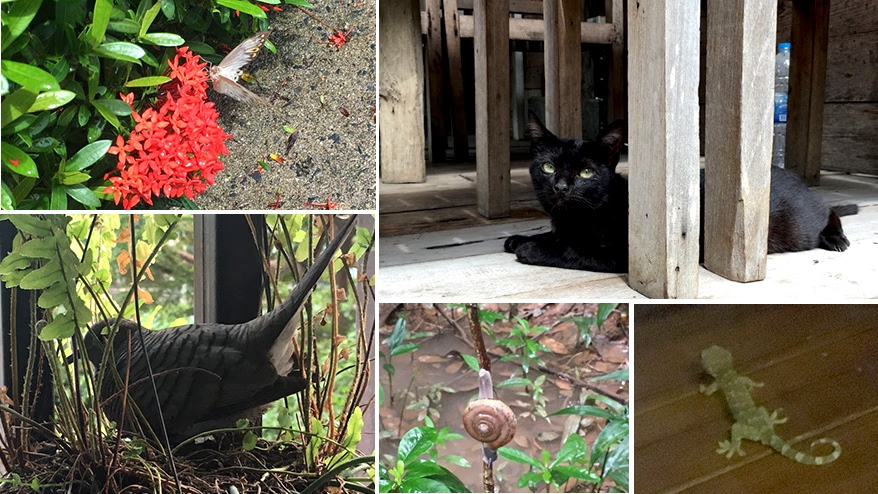It's been a while. This is Kawamura from Monotai.
On your days off, visit Thai temples and floating markets!
About a year after moving to Thailand, these kinds of scenes gradually became less and less common, and now I just spend my days off at home watching documentaries about animals and plants.
By the way, the visuals in recent documentary programs are really beautiful and worth watching.
I especially love the BBC videos, including the pleasant narration! I'm drawn into their worldview! I'm starting to feel a renewed curiosity about nature, something I never really had much interest in before.
Here in Bangkok, there are many animals such as dogs and cats that can be seen nearby.
If you go a little outside of Bangkok to islands and forests, you can see animals and insects unique to tropical regions that you will never see in Japan.
So, this time I would like to introduce some interesting animals that I saw in Thailand.
So let's get started this time too!
Entry number 1! "Nok Kun Thong"
Let me start with my favourite bird!

Nok Kun Thong * Image reproduced from Wikipedia: https://ja.wikipedia.org/wiki/Nok_Kun_Thong
Last year, when I went on a Monosus Thailand company trip to Koh Samui , I saw one in the hotel garden and thought it was cute! That's what sparked my interest. I immediately asked Ton from Monosus Thailand to tell me its name.
My name is Nok Kun Thong!
*By the way, "knock" means "bird" in Thai.
The glossy black body with yellow accents evokes an image of nobility.
However, when I asked Thai people, they told me that there are very few opportunities to see them in the wild (especially in Bangkok).
Looking back now, I feel that I was lucky to have seen one in the wild, as it is common to see them kept in cages as pets.
By the way, this bird is called a mynah bird in Japanese.
Speaking of mynah birds, yes, they have the habit of imitating voices.
I found a video that explains it in an easy-to-understand way, so I'll include it here.
Yes, he is definitely speaking.
Her voice is so captivating that you won't be able to get it out of your head once you hear it!
"Knock Gwao"
Next up is the Nok-gawao, which is a familiar bird to everyone living in Thailand! It is a member of the cuckoo family.
Even if you've never seen it, if you live in Thailand you've definitely heard the sound it makes!
Try listening to the sound from here.
When I wake up in the morning to the sound of "Gawa-o" (apparently it's the male who cries), I feel so refreshed!

Gawao (male)
*Image from Wikipedia: https://th.wikipedia.org/wiki/%E0%B8%99%E0%B8%81%E0%B8%81%E0%B8%B2%E0%B9%80%E0%B8%AB%E0%B8%A7%E0%B9%88%E0%B8%B2
By the way, although the Gawao has such a cute voice, it seems that it has a habit of brood parasitism, entrusting the care of its eggs to other individuals! If you like documentaries, you may have seen it somewhere. When you see a hatched chick, blind just after it is born, pushing the eggs of its foster parents out of the nest out of instinct for survival... You can feel the harshness of the natural world.
I just found a video so I'll post it here.
(The moment the chick drops the egg is around 2 minutes 30 seconds!)
A creature that brings happiness! Its name is "Jinjok"
Next up is entry number 3! It's Jinjok!
It's called a gecko in Japanese.

Jinjok * Image from Wikipedia: https://th.wikipedia.org/wiki/Jinjok
Jinjok can be found pretty much anywhere in Thailand. They are often seen inside homes, so they are also called Jinjok Baan (Baan means house). For Thai people, they are such familiar creatures that they are almost like they live with us. There is a story about them.
Apparently, in rare cases, there are geckos that have more than one tail, and it is said that good fortune will come to the homeowner who sees such a gecko.
As can be seen from stories like this, there is no doubt that it has been closely related to the lives of Thai people since ancient times.
By the way, I have yet to see a Jinjok with many tails. (I have only been in Thailand for six years, so I will wait patiently.)
And when you actually go about your daily life, you find that they are everywhere.
They often come to hang out in my room too, and before I know it, they're on the walls and ceiling.
They don't show any sign of threatening to harm us humans, so we can't help but find them adorable.
Even though he's scary, he's actually popular with everyone? "Here."
Next up is another reptile, this one called a hyacinth.
Its Japanese name is Mizuotokage. It is also known as Salvatore monitor.
It appears to be distributed mainly in Asia.
As you can guess from the name! It's completely different from the appearance of Jinjok from before, and it's huge!
Some of them seem to be over 2 metres tall, which at first glance looks a bit scary.
But if you look closely, she looks kind of spaced out and cute.

Here * Image from Wikipedia: https://th.wikipedia.org/wiki/%E0%B9%80%E0%B8%AB%E0%B8%B5%E0%B9%89%E0%B8%A2
Heer has become a famous landmark in Lumpini Park, known as the largest park in Bangkok.
It is a popular spot for Bangkok residents who enjoy jogging and cycling in the park.
One personal memory I have is from 10 years ago when I first came to Thailand on a trip and was happily rowing a boat on the lake in Lumpini Park when several of them came up to me and I got flustered!
I used to often see them lounging around by the water, but I wonder what it's like now...
The numbers of these animals have decreased recently, as they were exterminated from the park several years ago due to their excessive numbers (most of them were transferred to Ratchaburi Province).
How did you like the animal feature?
If you change countries, the creatures that live there will also be different. Nature is fascinating.
See you next time!

